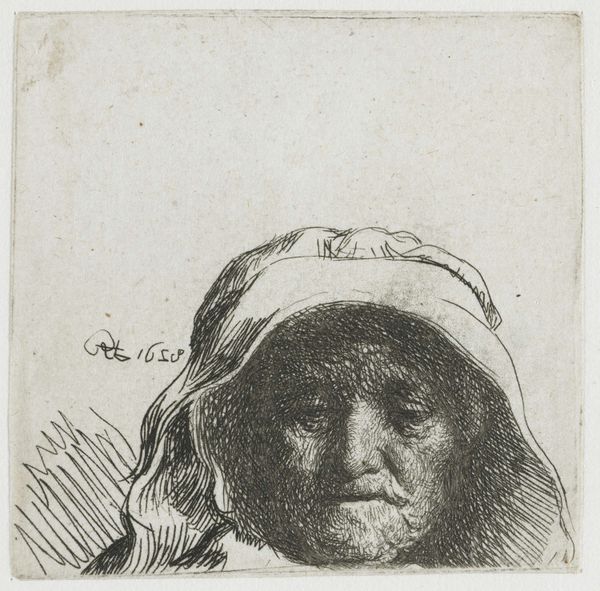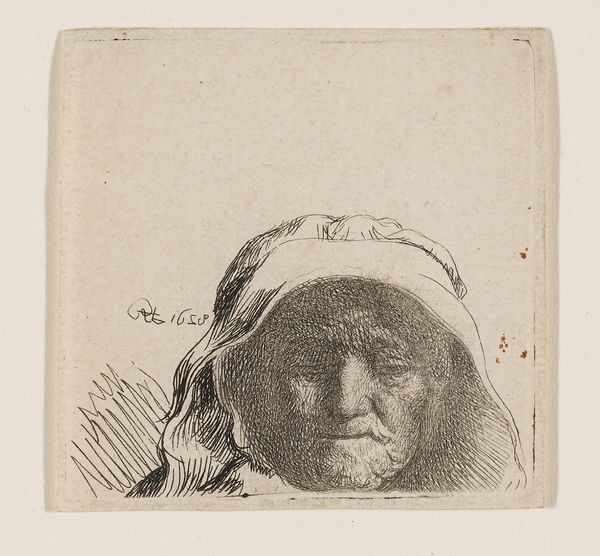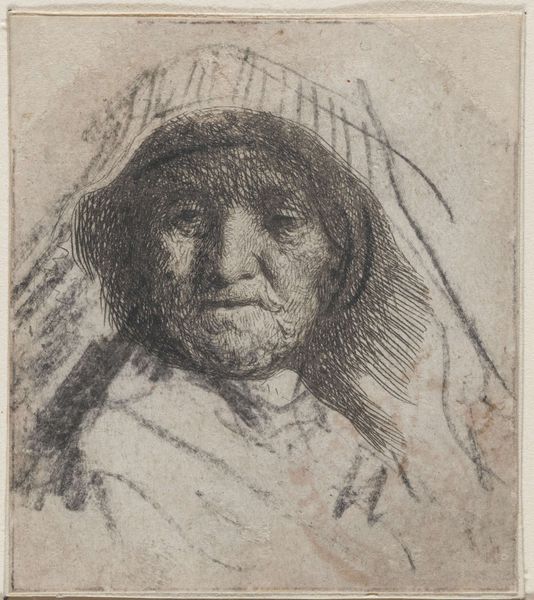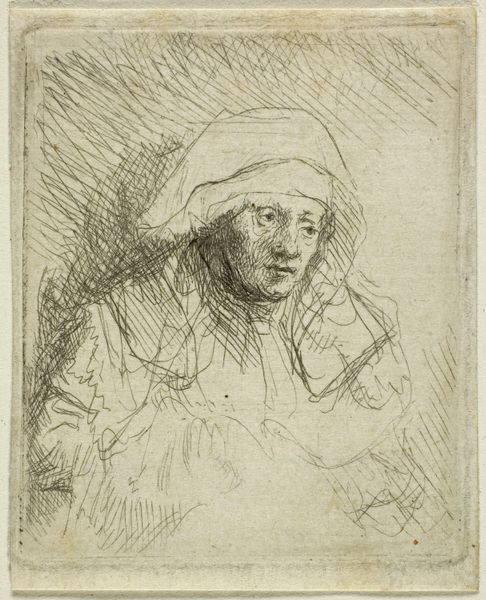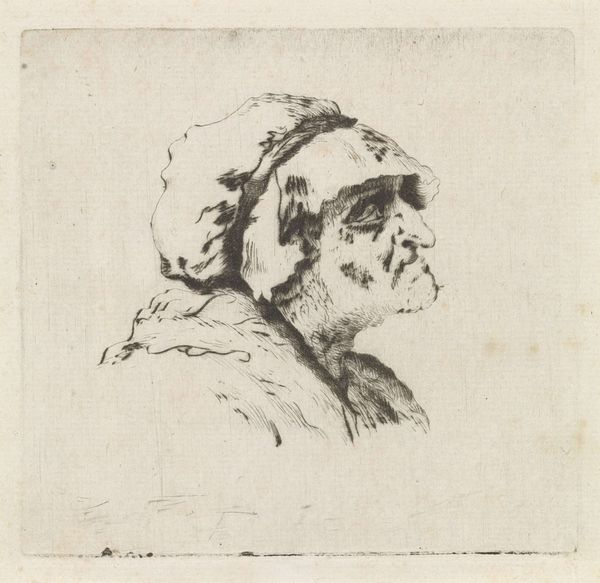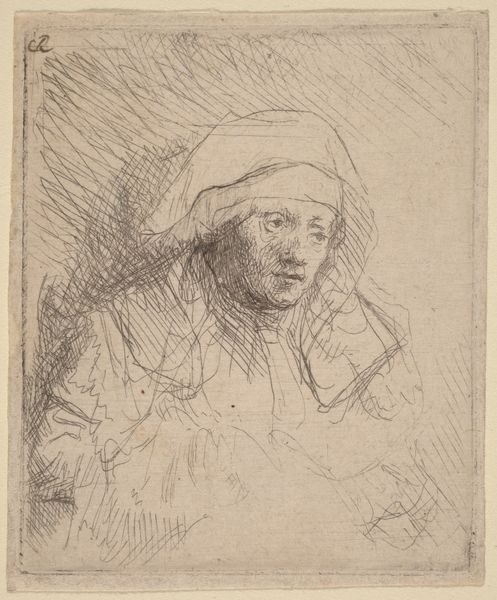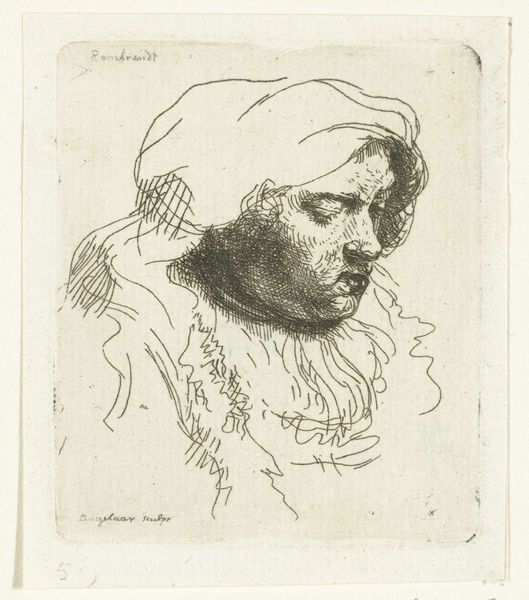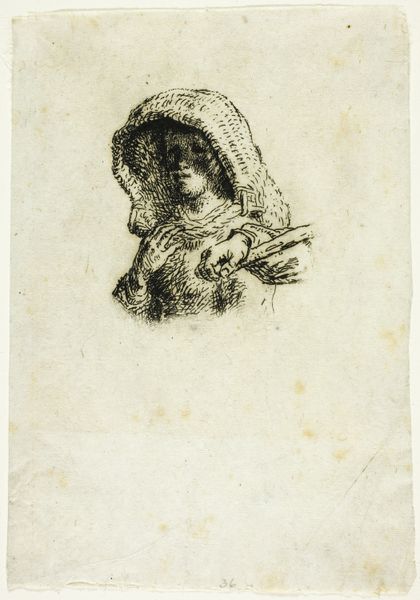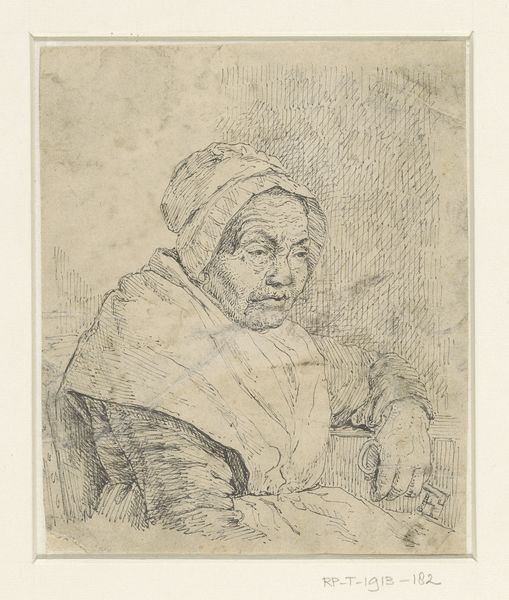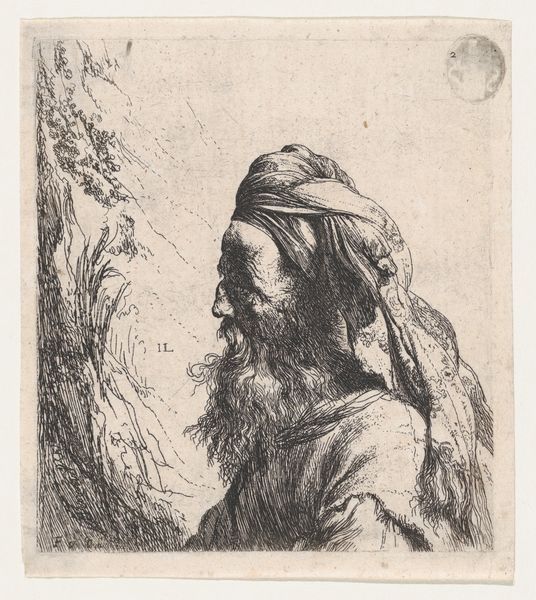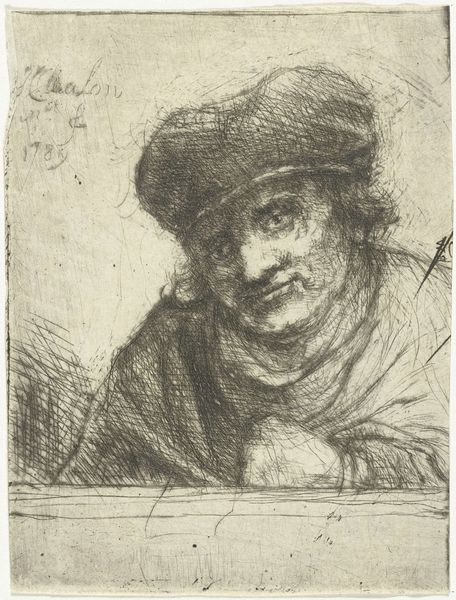
print, etching
#
portrait
#
medieval
#
baroque
#
dutch-golden-age
# print
#
etching
#
figuration
#
realism
Dimensions: 2 1/2 × 2 1/2 in. (6.35 × 6.35 cm) (image)2 13/16 × 2 11/16 in. (7.14 × 6.83 cm) (sheet)
Copyright: Public Domain
Editor: This is "The Artist's Mother- Head Only," an etching by Rembrandt van Rijn, made in 1628. It feels very intimate and immediate because it’s a close-up. I'm curious, what visual elements stand out to you when you look at it? Curator: Certainly. I'm struck by how Rembrandt uses line to delineate form and create depth. Notice the density of etched lines in the shaded areas of her face versus the relative openness in the illuminated areas. Consider how that contrast shapes our perception. It emphasizes the textures, the wrinkles, and the aging skin. Do you find the etching technique lends itself to that level of detail? Editor: Definitely. The etched lines are so fine; they allow for subtle gradations. I guess I didn't immediately think about *why* he would choose etching. Curator: Precisely. Look also at the compositional structure. The head occupies the lower portion of the frame, leaving a significant amount of empty space above. What does this asymmetry suggest? Editor: Perhaps that Rembrandt wants us to focus intently on the face itself, isolating her gaze and her expression? It creates a very direct and intense encounter, since her expression is sort of contemplative. Curator: Precisely. And it is important to understand how the direction and intensity of the light source contribute to that, accentuating particular textural attributes. Editor: I see it now. Thanks, I’ve gained a new perspective on Rembrandt's masterful technique and the way he uses formal elements to evoke emotion. Curator: Indeed. It’s in the considered arrangements of these components that we apprehend not just the *what* but the *how* and ultimately, the *why*.
Comments
minneapolisinstituteofart about 2 years ago
⋮
Rembrandt was living at home in Leiden, Holland, when he sat down to etch in front of an easily accessible model, his 60-year-old mother. Old, lined faces would be a lifelong motif for him, but it’s hard to imagine one etched with more delicacy or penetration. The air of introspection may owe to the Dutch tradition of picturing aged people as pious and pondering salvation. When plans to extend the torso didn’t work out, Rembrandt, then age 22, did the unthinkable and severed the plate under his mother’s chin. He was nonetheless proud of the print, dating and signing it as a finished work. His mother is the only verifiable family member he recorded. Rembrandt named his three daughters (two died young) Cornelia, after her.
Join the conversation
Join millions of artists and users on Artera today and experience the ultimate creative platform.
